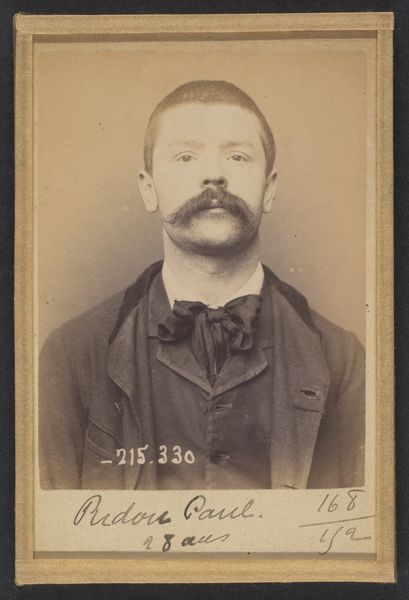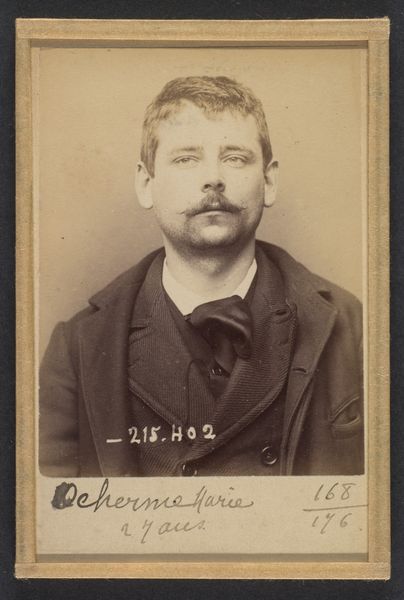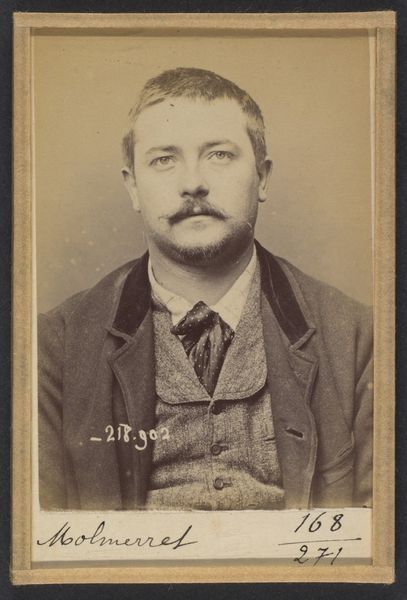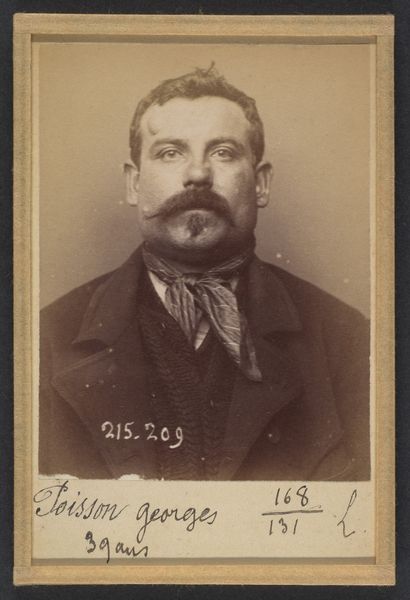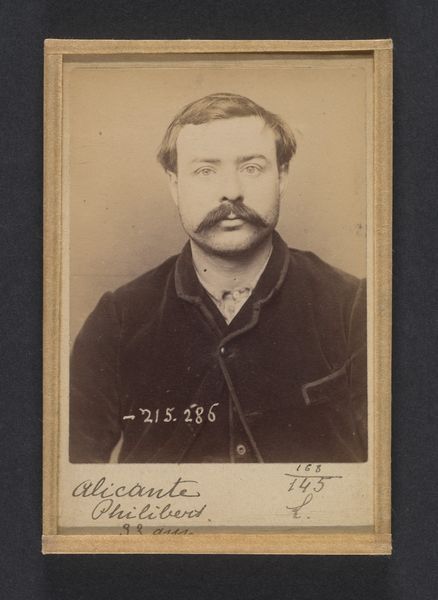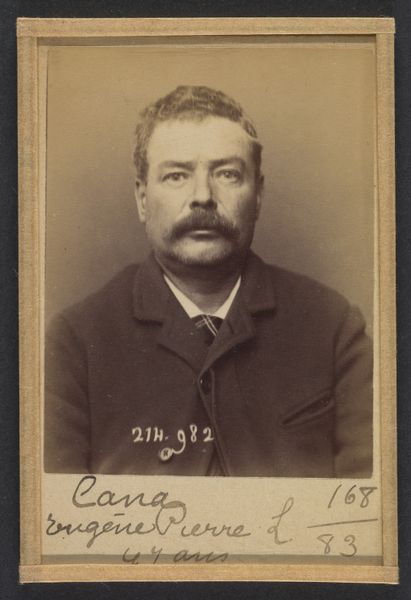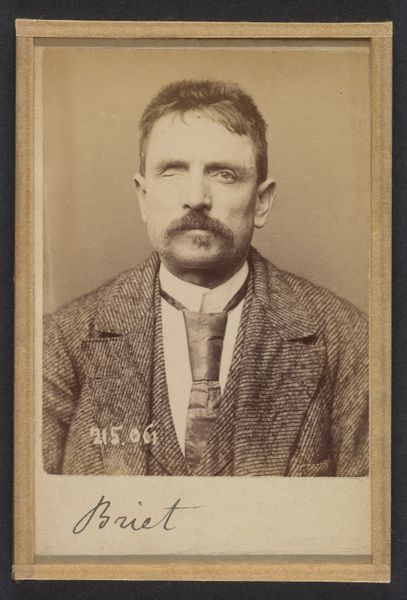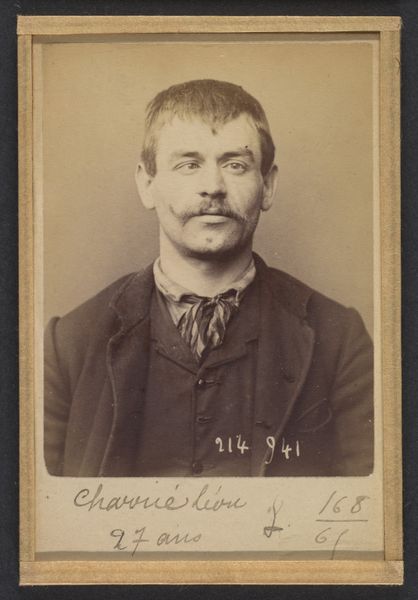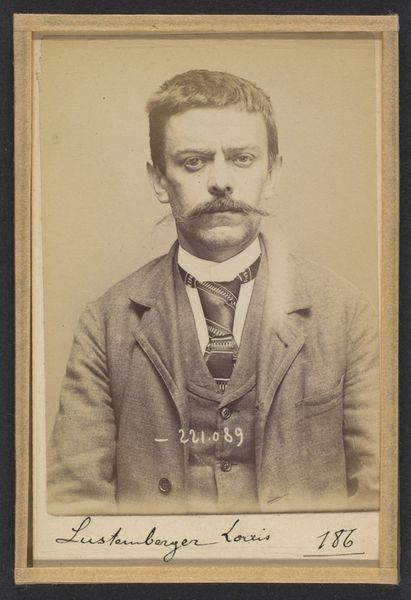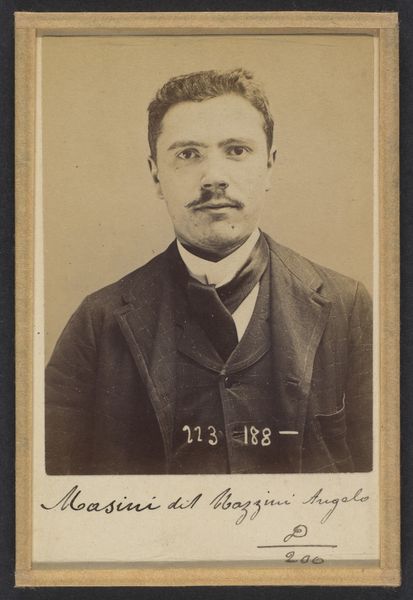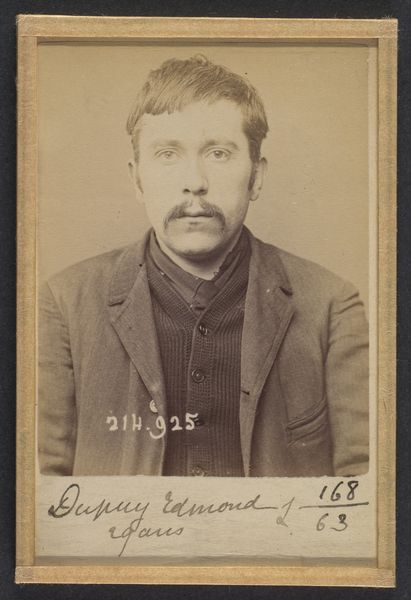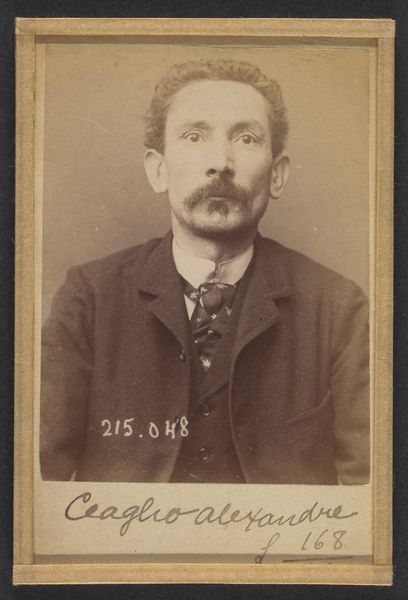
Breiner. Jean-Baptiste. 31 ans, né à Bar sur Aube (Aube). Mécanicien. Anarchiste. 5/3/94. 1894
0:00
0:00
photography, gelatin-silver-print
#
portrait
#
portrait
#
photography
#
gelatin-silver-print
#
academic-art
#
realism
Dimensions: 10.5 x 7 x 0.5 cm (4 1/8 x 2 3/4 x 3/16 in.) each
Copyright: Public Domain
Curator: This is a photograph entitled "Breiner. Jean-Baptiste. 31 ans, né à Bar sur Aube (Aube). Mécanicien. Anarchiste. 5/3/94.," taken by Alphonse Bertillon in 1894. It’s a gelatin-silver print currently held at the Metropolitan Museum of Art. Editor: My immediate impression is one of melancholy. The sepia tones and the sitter's direct gaze lend it a gravity, a somberness, that speaks of a specific historical weight. Curator: Precisely. Bertillon's photographs transcend simple portraiture; they function as cultural artifacts loaded with meaning. Consider that Jean-Baptiste is identified here as an "anarchiste." Editor: Yes, but let's also consider the material production. Gelatin-silver printing allowed for mass reproduction, connecting to burgeoning technologies of control and identification. What about Bertillon's institutional position and methods in relation to anarchist movements? Curator: Indeed, Bertillon developed the "Bertillonage" system—anthropometric identification—which aimed to scientifically categorize and control individuals. This photograph isn't merely an image; it's a document used to reinforce authority. The subject becomes an allegorical figure of defiance. The date handwritten below serves as more than just a registry, and morphs into an identity. Editor: Exactly. The material inscription underscores that control, the codification of identity reduced to handwritten annotations and numbers, like the “215.158” above the signature. We have a convergence of materials and methods aimed to solidify identity as a controlled and constructed idea. Curator: And beyond that stark function, there is a distinct human element. Notice his corduroy jacket and checkered shirt; despite the institutional context, elements of personal expression still bleed through, suggesting complexities beyond simple categorization. There’s even a small bow tie in place. Editor: It highlights the paradox doesn't it? These subtle personal touches serve as unintentional resistance to the photographic attempt at total surveillance. They point back to the labor involved, both his in the assembling of these pieces and that of Bertillon to capture and classify this worker. It emphasizes the constraints the subject attempts to transgress in even these little forms of personal adornment. Curator: Studying this portrait has offered a multilayered understanding of how historical documentation, with its focus on cultural identity and control, intersects with visual and material narratives of individuals. Editor: Agreed, the convergence of Bertillon’s intent and the tangible materiality gives this photo its resonant weight and allows us to consider a moment where power meets personal agency.
Comments
No comments
Be the first to comment and join the conversation on the ultimate creative platform.
